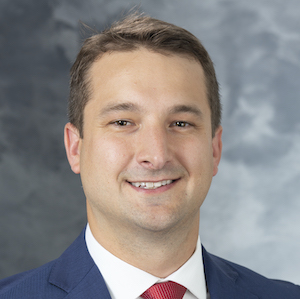 Retinoblastoma is the most common eye cancer in childhood and provides unique challenges to treatment. Pediatric Interventional Radiology faculty Eric Monroe, MD explained, “If retinoblastoma hasn’t spread by the time of diagnosis, it is curable by removing the eye, and this has historically been the preferred treatment for most cases. A variety of alternatives have been explored in efforts save the eye and vision, such as radiation, which carried with it a lot of problems. Chemotherapy given to the whole body for the treatment of retinoblastoma within the eye or metastatic disease is associated with vomiting, nausea, hair loss, suppression of the immune system, and formation of secondary cancers.”
Retinoblastoma is the most common eye cancer in childhood and provides unique challenges to treatment. Pediatric Interventional Radiology faculty Eric Monroe, MD explained, “If retinoblastoma hasn’t spread by the time of diagnosis, it is curable by removing the eye, and this has historically been the preferred treatment for most cases. A variety of alternatives have been explored in efforts save the eye and vision, such as radiation, which carried with it a lot of problems. Chemotherapy given to the whole body for the treatment of retinoblastoma within the eye or metastatic disease is associated with vomiting, nausea, hair loss, suppression of the immune system, and formation of secondary cancers.”
However, there exists a unique treatment called intra-arterial chemotherapy (IAC), during which a tiny catheter is navigated from the artery in a child’s leg, through the arteries in the head and neck, and subsequently into the artery supplying the eye. From here, chemotherapy is delivered directly to the vasculature that supplies the eye. “Using IAC to treat retinoblastoma has been greatly refined over the past two decades, and the real impetus for developing this treatment originally was eye salvage in areas where taking the eye out had a lot of cultural stigma,” Dr. Monroe recounted. “When you only give chemotherapy to the vasculature that supplies the eye rather than the whole body, you only have to give about 10% of what you give for systemic treatment, but the tumor sees about 10 times as much as it otherwise would. You have a profound effect on the tumor but very little effect on the rest of the body so things you normally associate with chemotherapy are not common side effects for this treatment,” he explained.
Since joining the Department of Radiology in 2021, Dr. Monroe has established a new clinical program that utilizes IAC to treat retinoblastoma in pediatric patients at UW Health. He gained many years of experience with this approach while at the University of Washington, one of the first institutions that offered this treatment. Dr. Monroe works closely with Interventional Neuroradiology faculty, Beverly Aagaard Kienitz, MD, FACR, who also gained experience with this technique at University of Washington during its development.
Washington during its development.
Dr. Monroe notes that UW Health is now one of only 20-25 sites in the country to offer IAC and, one of the few in the Midwest. Before this service was offered at UW Health, many families might choose to have the child’s eye taken out, as the burden of frequently traveling to a coastal city, where many of the centers that offer IAC are located, was too much of a barrier to receiving this treatment. With IAC now available at UW Health, parents no longer face this barrier, and their children can be effectively treated close to home.
Drs. Monroe and Aagaard Kienitz credit the cross-disciplinary collaboration between the Departments of Radiology, Hematology/Oncology, Ophthalmology, and Pediatrics for the quick establishment of this new IAC program, which truly embodies the Wisconsin Idea.